|
|
|
Darwin 2004 UFO Preliminary Report and Analysis
by © Diane Frola & Robert Frola, US Kyle King
The Australian UFO Research Network
Preliminary Report, this sighting is under investigation by AUFORN
Page 2
The image of the Peladies was taken by the Hubble Telescope. I used process used is called opacity, the opacity process allows the image to become transparent while imposed over another.
The result of this re-sampling is interesting. I started by working by super-imposing the image of the Peladies over Nigels from visible to invisible. Starting at 100% opacity down to 0% percent opacity.
|
|
|
 |
|
 |
|
|
|
Image 2- at 80 percent opacity, the circle is around Nigels object which is becoming more visible as I drop the opacity
|
|
|
|
Image 1- at 100 percent opacity, one image pasted over another.a
|
|
|
|
 |
|
|
|
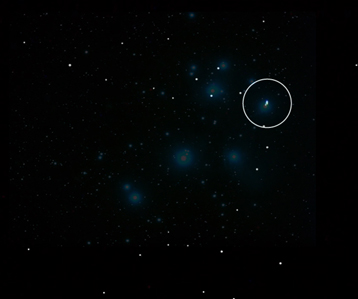 |
|
|
|
Image 3- at 50 percent opacity, note to the left of the object circled, 4 stars line up with the image I superimposed over the original image.
|
|
|
|
Image 4 - at 20 percent opacity
|
|
|
|
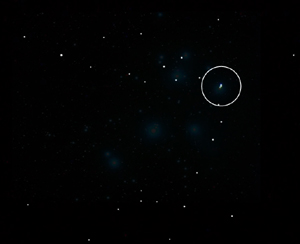 |
|
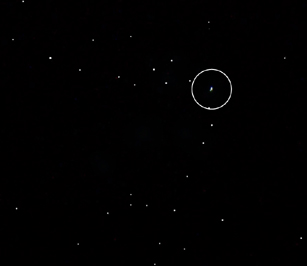 |
|
|
|
Image 5 - at 10 percent opacity
|
|
|
|
Image 6 - at 0 percent opacity
|
|
|
|
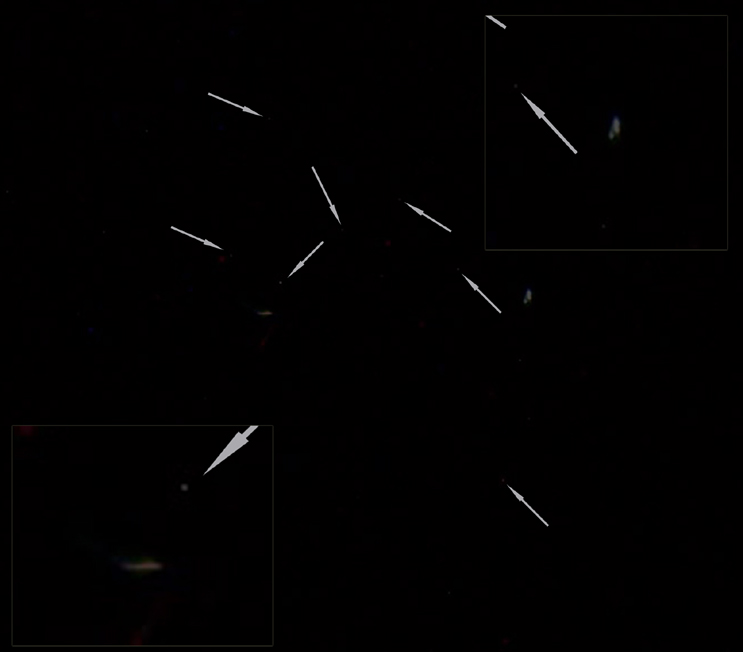 |
|
|
|
One photograph superimposed over another to view object for movement and the object appears to have moved.
|
|
|
This next image is an image Nigel sent me of the same object not taken through the binoculars I have placed them together so you’re able to see the difference.
|
|
|
|
 |
|
|
|
Object on the left taken with binoculars
Pentax 7x50 field 7.1 deg |
|
Object to the right taken without binoculars
Kodak DX7630. 39mm-117mm lens
|
|
|
The preliminary report has now ruled out the Pleiades constellation.
Hi Diane,
Thank you for sending this. After resampling, I realised that the version on your web site was similarly resampled, and I got essentially the same image. This is a good thing.
I have played with levels and contrast, and unless there is more artifact than expected, the object appears to be larger than the obvious bright reflections.
My initial impressions...
The apparent colour variations would be expected when imaging a highly polished surface, or glass, which tends to scatter light in prismatic fashion, and can cause the halo effect seen here.
The halo I'm talking about is the gradated colour bands which appear in the correct spectral order, i.e., blue at the top, followed by violet, then orange and red, and then green. The spectral halo falls roughly from the top left of the image to the bottom right, but the irregular shape of the object provides secondary reflections which bleed the colours together in some areas.
|
|
|
|
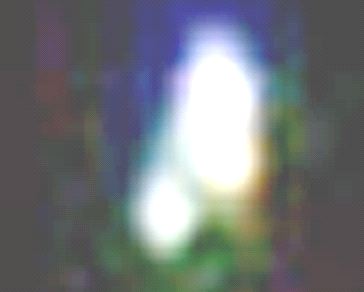 |
|
|
|
Image above by Kyle King USA.
I do not get the impression that this object is radiating light. It appears to be lit from the right as seen through the camera lens, and somewhat forward of the object. Since the photo was taken at night, and presumably without a flash or external light, the obvious sources would be the moon, if it was not full, and the sun, if the object was far enough from the earth to catch the sunlight. If the photo was taken shooting into the ESE, the sun would be to the viewer's SW, and over the horizon. The object would have to be some distance from the earth to reflect the sun. The moon would be a better
possibility if the object is a reasonably sized constructed craft, since being lit by the sun from the opposite side of the earth would require some distance.
If this analysis is correct, the reflective surfaces of the object would be rather smooth, and glassy, like highly polished metal or perhaps ice. Hmmm...ice...like a comet.
Just a moment...while Googling Machholz, I found this link...
http://www.space.com/scienceastronomy/comet_machholz_041207.html
I believe that the object in the photo is Comet Machholz C/2004 Q2. It was visible to the naked eye at Magnitude 2-3 on Dec. 12, it would have been near Orion in the ESE sky at 8:30PM, and would have tracked almost straight up to what would be called North once it passed over the viewer's right shoulder into the NW sky after midnight.
|
|
|
|
 |
|
|
The comet would have been the brightest object in the ESE sky, and does not appear anywhere else in the photo, and its movement would not be related to the movement of the stars, so it would be noticeable.
The nature of a comet, with its icy exterior, reflects light just as this photo would indicate, and the coma surrounding the comet could indeed produce a prismatic halo, when photographed at an oblique angle to the sun.
At extreme contrast, there is additional structure to the object, projecting down and to the right of the object. I suspect these are areas of the comet body not directly lit by the sun, or not in the ideal location for the intense reflections seen from the two prominences in the photo.
There is not a discernible tail, but this comet doesn't reach closest approach to the sun until January, so it is not unusual not to see a tail at this stage. Of course, we are still not completely sure what is usual for a comet, since we don't really know what they are for sure.
Diane, I think it is a pretty good bet that this is a rather spectacular photo of Comet Machholz C/2004 Q2.
While it is a little disappointing from a UFO perspective, I think the facts lead to this conclusion, and I think the image supports the facts, and the conclusion. If we had more images of the comet, we could compare, but the thing was just discovered this year, so few folks have imaged it, waiting for it to get closer to the sun and maximum magnitude.
I think a good idea would be to send a copy to one of our List astronomers, and give them the sighting info and see what they make of it. I'm sure there are some who could pinpoint where the comet was better than my Starry Night.
What do you think? I'd be very interested in your thoughts. I've attached the contrast-enhanced inset for you to look over. The photo was so dark, that it seemed likely that additional contrast might reveal details of the object itself. I was not disappointed.
I look forward to hearing from you! And Happy Holidays to you and yours.
Sincerely,
Kyle King
Comment: Diane
I like you have spent many hours analysing Nigels photo millimetre by millimetre for colour variations to detect starlight.
I feel we can rule out a star constellation as the object now appears to have moved and the stars have remained in the same position, which you can see from my final superimposed image of image 1 & 2. At present I am awaiting conformation of the comets position and will post the results as soon as I get a reply
I would like to thank Brett Holland & Kyle king for their help in trying to identify this object.
|
|
|
|
|
|
|
|
|
|
|
|
|
|
|
|
|
|
|
|
|
|
|
|
|
|
|
|
|
|
|
|
|